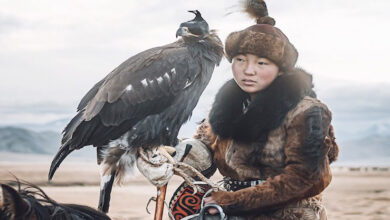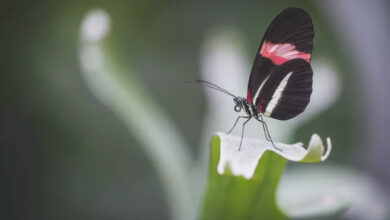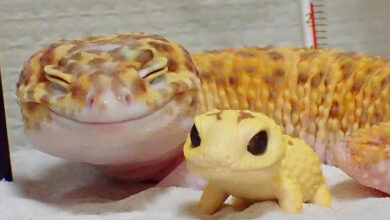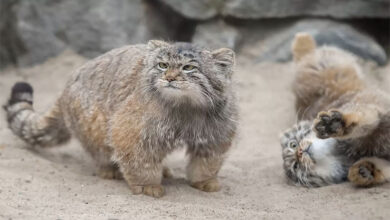Golden Mystery: Rare Yellow King Penguin Stuns Scientists and Birdwatchers Alike
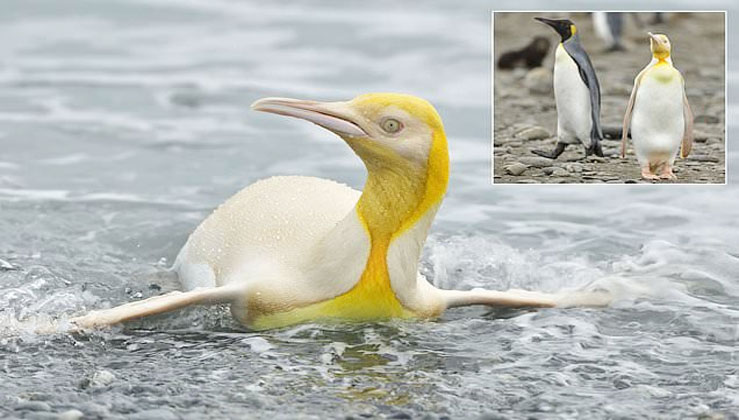
A wildlife photographer captured a once-in-a-lifetime sighting of a rare yellow King Penguin on South Georgia Island. The unusual bird has sparked scientific curiosity and global fascination.
A Glimpse of Gold Among the Black and White
When Belgian wildlife photographer Yves Adams landed on South Georgia Island in the southern Atlantic Ocean, he was met with a wild spectacle: a beach teeming with King Penguins, elephant seals, and Antarctic fur seals. As he surveyed the scene, one strange figure caught his eye. Amid the sea of black-and-white penguins, something pale and glowing stood out. “Suddenly, we saw this group of King Penguins swimming on the coast,” Adams recalls. “And then there was this one particular bird that took our attention—a pale bird.” At first, Adams was puzzled. A seasoned birder leading a wildlife photography tour, he had studied every species expected on the island. But nothing prepared him for the ghostly figure swimming ashore. “I was a little bit in shock,” he admits. “I thought I must have skipped some page in the booklet.”
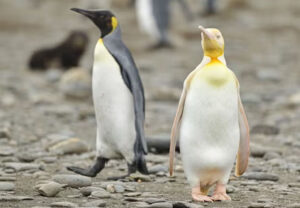
A closer look through binoculars confirmed the bird was indeed a King Penguin, but it was unlike any ever documented. Its feathers gleamed white and yellow, missing the familiar deep blacks. As the bird swam closer, Adams seized his camera. “I grabbed my camera, and I started shooting,” he says. “It was spectacular.” The entire encounter lasted less than a minute before the penguin disappeared into the crowd. But that short moment sparked widespread intrigue when Adams’ photographs went viral, prompting ornithologists and color genetics experts to weigh in on the mystery bird.
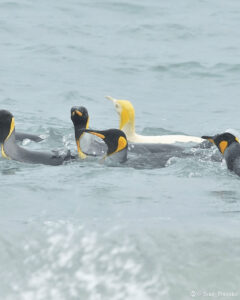
Not Albino, but Something Else Entirely
When it comes to color abnormalities in birds, albinism is often the first assumption. Albino animals lack all melanin and typically exhibit pink eyes, skin, and pale-colored features. But Allison Schultz, curator of ornithology at the Natural History Museum of Los Angeles, doesn’t believe this bird fits that mold. Penguins produce a unique yellow pigment called spheniscin, unlike the carotenoids responsible for yellow and red in most birds. Schultz noted that the penguin had pigmented eyes and light rufous tones in its feathers—signs that melanin was still present. “Albino means that all melanin production is gone, whereas leucism means that there is still some melanin production,” she explains. Leucistic birds can appear entirely white or exhibit patchy pigmentation loss. In this case, the penguin seems to lack all black and brown pigment, revealing hidden yellow hues normally masked by dark feathers, especially around the neck and head. Schultz suggests the bird’s melanin pathway might be broken, preventing pigment from being deposited properly.
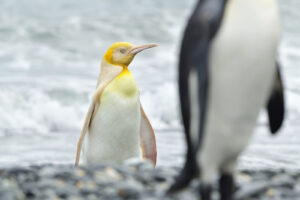
A Case for “Ino” Instead of Leucism
Not all experts agree with the leucism diagnosis. Hein van Grouw, an ornithologist at The Natural History Museum at Tring in the UK, proposes a different explanation. He believes the penguin may be an example of an “ino” bird—a term more commonly used in Europe to describe incomplete melanin oxidation. According to van Grouw, the rusty tinge on the penguin’s back feathers suggests some melanin synthesis is happening but not to its full extent. While U.S. experts might classify such a bird under leucism, van Grouw argues for the more specific term “ino” based on the visible characteristics. Despite the naming debate, both experts agree the bird’s condition is likely due to a genetic mutation affecting melanin production—not albinism. However, without capturing and genetically testing the penguin, the true cause remains speculative.
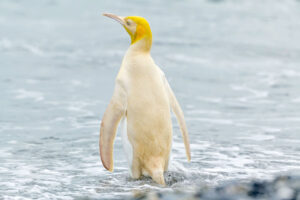
A Rare Bird With an Uncertain Fate
Because the mutation is thought to be recessive, van Grouw suspects the penguin is female and likely a young adult. If she mates with a male carrying the same genetic trait, their daughters could inherit her luminous yellow feathers. Yet, the mutation that makes her so visually stunning could also pose a danger. King Penguins rely on counter-shading—dark backs to blend with the ocean floor and light bellies to avoid predators from below. This golden penguin’s bright coloring could turn her into an easy target, though it might also attract a potential mate. “It could really go either way for this penguin,” Schultz says. For Adams, the moment was a magical and unexpected gift. “At the time itself, I was not thinking, okay, this is gonna be a picture that is going to go viral,” he says with a laugh. “Maybe it’s a little bit more special than I thought.”

